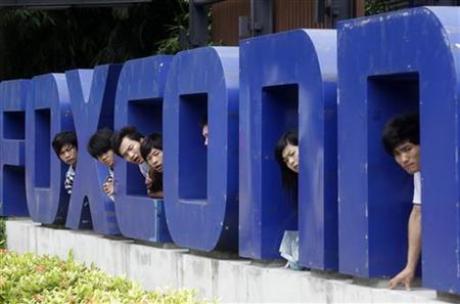Your Next Giant LCD Could be Made by Foxconn in USA
Foxconn is talking about building plants in North America and Indonesia.
During Foxconn's 40th anniversary gathering, chairman Terry Gou told employees that the company plans to relocate some of its manufacturing away from China to its biggest market, the United States. He said many customers and partners have even asked Foxconn to build American factories.
Currently, Foxconn is investigating the possibility of manufacturing liquid display screens larger than 60 inches here in the States, as it's difficult to ship those panels to the U.S. from Asia. Foxconn has also set its sights on Indonesia thanks to rising costs and the labor situation in China.
Foxconn Technology Group announced back in November that the company plans to spend $30 million over the next two years to expand its current office located in Harrisburg, Pennsylvania, including hiring 500 new employees. Foxconn also plans to provide $10 million to Carnegie Mellon University in Pittsburgh to help in robotics research.
A prior report stated that Foxconn wants to open two headquarters here in the States: one on the West Coast and one on the East Coast. These two offices will seek out locations for factories, which will only manufacture high-end devices due to the higher cost of operation. China factories will continue to manufacture lower-end devices.
News of Foxconn wanting to build TVs in North America isn't anything new. Sources confirmed in November 2012 that an unknown number of American factories would focus on LCD TV production instead of Apple hardware. These factories will reportedly be highly automated and easier to manage.
Kuo Ming-Chi, an analyst at Taipei-based KGI Securities, told the Chicago Tribune on Sunday that Foxconn is looking more closely at the U.S. in order to move closer to some of their biggest clients. "Obama is also really pushing to return manufacturing to America and boost employment opportunities," he said.
Foxconn has production facilities in more than 10 countries including China, Turkey and Mexico. Gou told employees on Sunday that in order to diverse Foxconn's manufacturing base, Indonesia will need to be a key production site.
Get Tom's Hardware's best news and in-depth reviews, straight to your inbox.
Gou also said that the company is shooting for 15 percent revenue growth in 2014.

Kevin Parrish has over a decade of experience as a writer, editor, and product tester. His work focused on computer hardware, networking equipment, smartphones, tablets, gaming consoles, and other internet-connected devices. His work has appeared in Tom's Hardware, Tom's Guide, Maximum PC, Digital Trends, Android Authority, How-To Geek, Lifewire, and others.
-
Blazer1985 The real news here is that production cost is increasing in china and the labor situation is getting a little better. Good news.Reply -
tobalaz So... Where in the US are we going to receive a gracious increase in the suicide rate?Reply -
tului ReplyI will never buy their slave made products.
Well if they're made in the US, they won't be.Although I would prefer an American made product by an American company than from some Chang Chong corporation. -
Jgriff @deadmeow chances are you already have...and will continue to do so. They are the number 1 manufacturer in consoles and apple products as well as many of the oem motherboard brands.Reply -
blueflippyflop #chatticonvalley/#Bring it to the manufactering capital of the *coughCoughsoutheastern.. USA, Chattanooga tnReply -
blueflippyflop #chatticonvalley/#Bring it to the manufactering capital of the *coughCoughsoutheastern.. USA, Chattanooga tnReply -
popatim I doubt any serious work would be done here. American works would want $10/hr minimum instead of the $10/wk they get over there.... LoLReply -
oj88 @popatim: $10/wk must be the wage of 20 years ago. Current wage in China is ~$150/wk, and ~$200/wk for high skilled workers, lol. In the eyes of capitalists, it is all about cost. In the past 10 years, China's average labor cost has been tripled, so has the transportation cost across the Pacific Ocean. Thus it makes sense to move the heavy items manufacturing back to the States, where the market is. Same practices are also applied to Japanese, Korean and German car manufacturers. On the other hand, light and high-margin items like iPhones can still afford to be made in China.Reply
